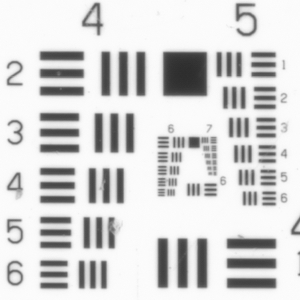Why not ?
Just scan a USAF 1951 resolution target slide and post the scan.
https://en.wikipedia.org/wiki/1951_U...ion_test_chart
If group 6 element 2 bars are seen then your system is outresolving LF lenses, so enough for LF sheets. If you see Group 7 elements then you have a first class system...
Here you have the result from an X5 (Not a drum, but close, This is scanning 35mm):

You can compare to that.
Other practical tests can be done with an IT8 slide target, for density, etc, Also you can measure stray light.
https://www.flickr.com/photos/timpar...125592977@N05/
IMHO numeric tests do not explain all but a lot is explained...







 Reply With Quote
Reply With Quote
Bookmarks